Rainbow Trout Fishing: Expert Tips and Tactics
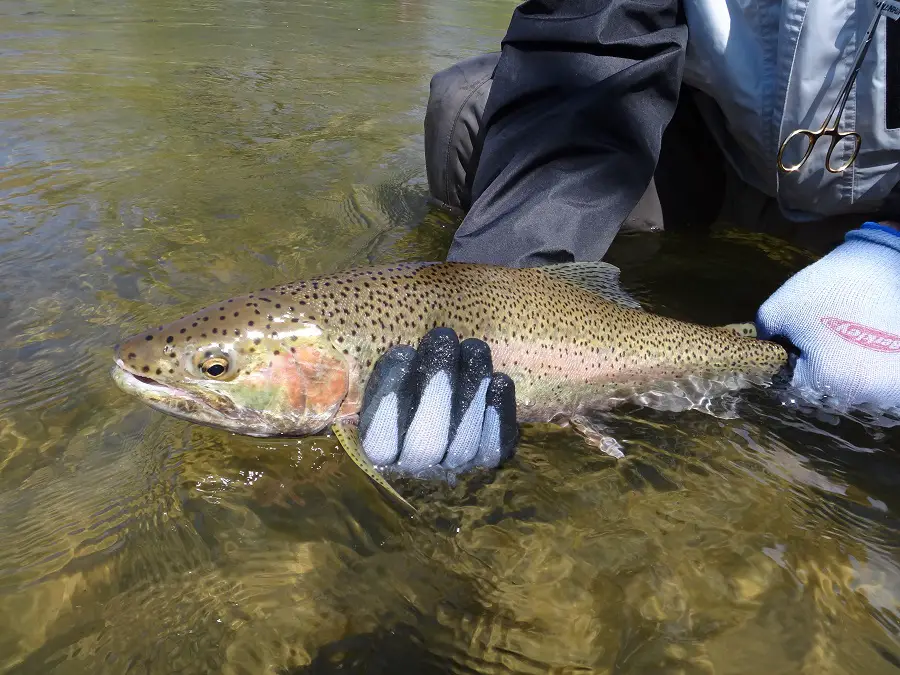
One of the species I’ve been guiding for over 20 years is the rainbow trout. During that time, I have been rainbow trout fishing in just about every condition and in all types of water from lakes, ponds, reservoirs, and most rivers and streams.
Rainbow trout fishing is best done with a few select methods like float fishing, bottom fishing, and lure fishing. Rainbow trout tend to like certain types of bait, like fish eggs, worms, nymphs, and minnows, and if you use these, you can do well. Lures like spoons, spinners, and crankbait can also be excellent.
As a guide, who’s been on the water over 250 days a year for over 20 years, I’ve determined what gets rainbows to bite, where its best to fish them, and when it’s best to fish them.
I will be brutally honest with you and tell you that most good guides fish differently than the average fisherman and that the results guides get are staggeringly better. I’m not bragging, I’ve just seen the results my clients get compared to other anglers that are fishing in the same area at the same time.
Lucky for you, I will give you tips and tricks I use, and that other top guides and experts use when rainbow trout fishing to catch more rainbows.
About Rainbow Trout
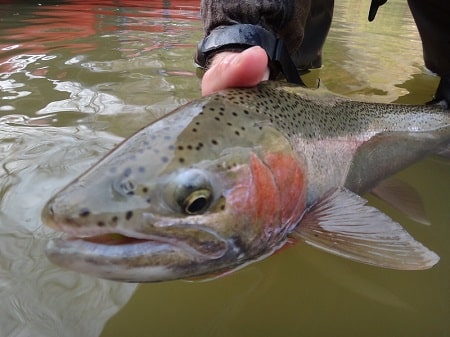
The Rainbow trout, with its scientific name Oncorhynchus mykiss, is a colorful North American trout and a popular freshwater gamefish.
The Rainbow trout, also known as a Rainbow or just a Bow, thrives in clear cold streams and can be identified by its distinctive black spots and reddish bands on both sides along the lateral lines.
As part of the Salmonidae family, it exhibits remarkable adaptability, being able to move between freshwater and saltwater environments, but in this case, we will be discussing the non-migratory rainbow trout that resides its entire life in freshwater.
The Salmonidae family includes various species like trout, salmon, chars, freshwater whitefishes, and graylings.
Rainbow Trout Appearance
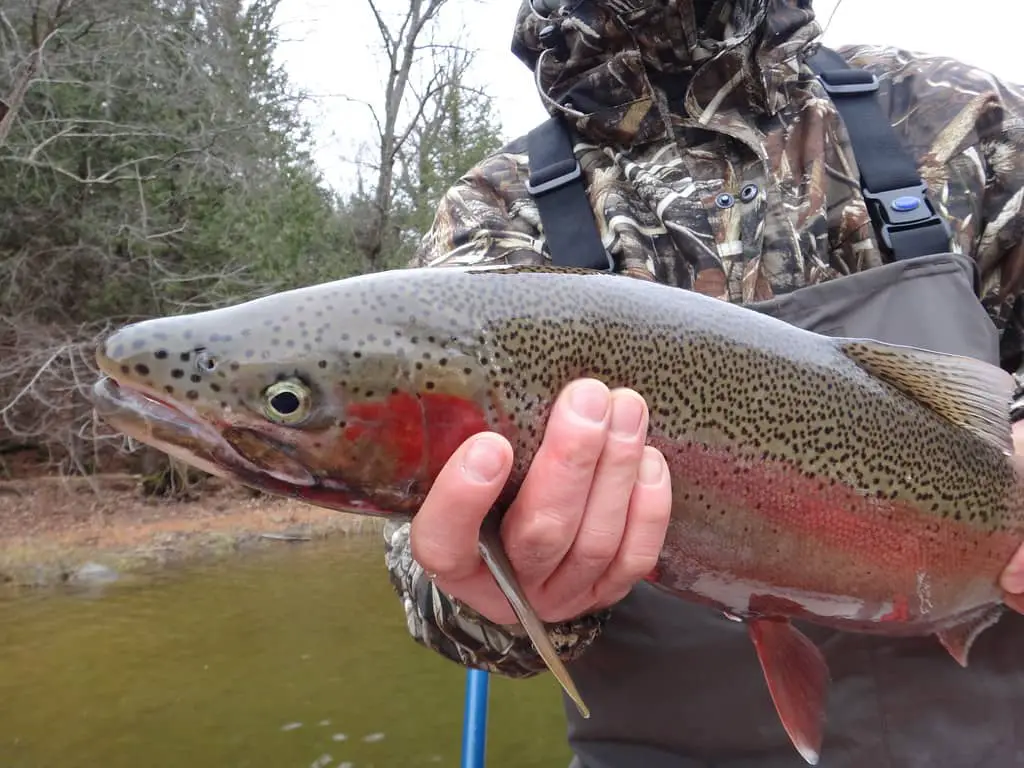
The rainbow trout is known for its red or pink stripe located on both sides of its body and often red or pink cheeks/gill plates. The rainbow is also heavily spotted on its upper body with small black spots.
Due to the coloration, rainbows are generally easy to identify. However, a rainbow from one water body may look considerably different than one from another water body. This is often a result of their environment and primary food source.
Rainbow Trout Range
The original rainbow trout is native to primarily western North America. Due to extensive stocking programs, the rainbow trout is widespread throughout USA and Canada.
Rainbow trout can now also be found in select areas worldwide, including the UK, Europe, Asia, South America, and Australia.
Habitat and Diet
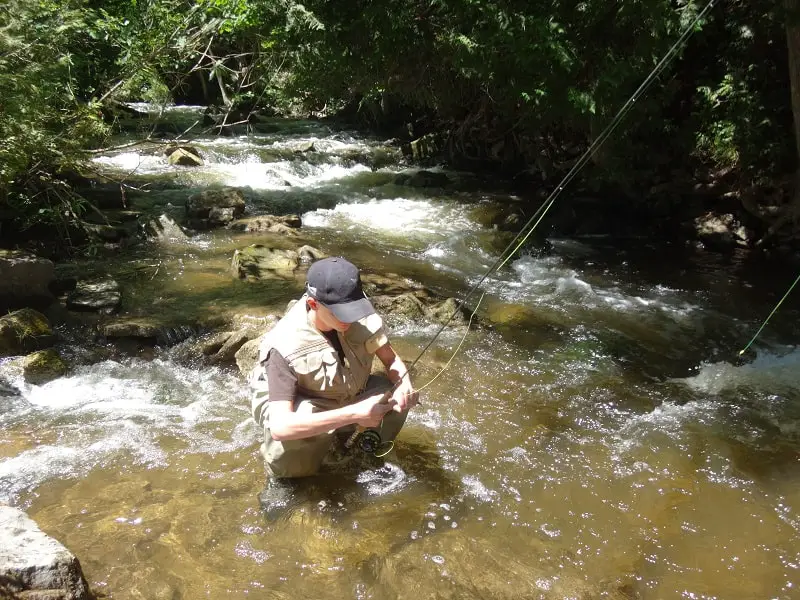
Rainbow trout thrive in cold clear water streams and rivers that stay cold, are well oxygenated, and have an abundant source of food which consists of aquatic insects and fish.
Rainbow trout can also thrive in some lakes, reservoirs, and ponds.
Rainbow Trout Spawning Season
Rainbow trout generally spawn after the winter in the spring. Since North America’s spring is at a different time of the year than Australia’s spring, I can’t really say a specific month.
In North America, Rainbow trout typically spawn between February in the warmer states and May in the colder states and in Canada.
Rainbow Trout Sizes And Record Rainbow Trout
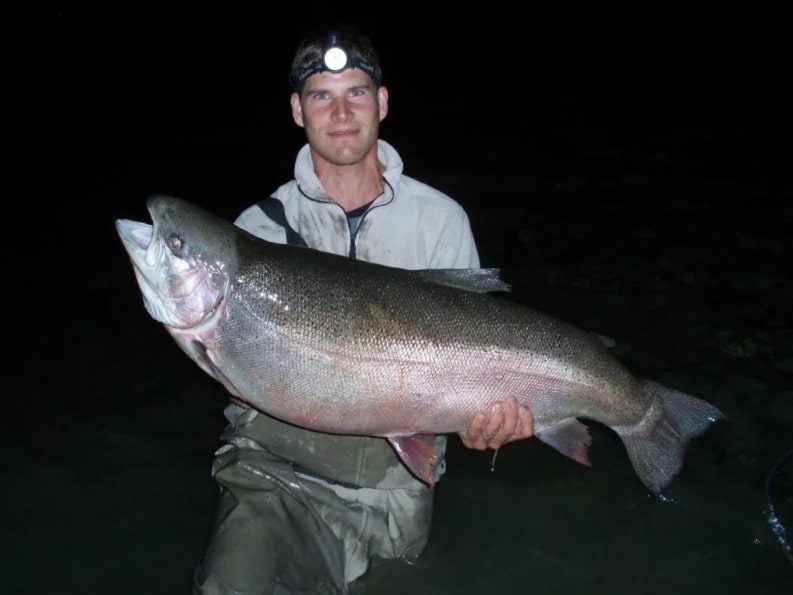
An average rainbow trout is 12 to 16 inches, but rainbows will adapt to their environment, which means on tiny little creeks, they may stay smaller, but in large rivers and lakes, they can grow to over 40 inches long.
Some notable rainbow trout records include:
- 48 Pounds: Current world record – Lake Diefenbaker, Canada
- 35 Pounds: Oregon – Rogue River
- 33 Pounds: Montana – Kootenai River
- 31 Pounds: New Mexico – Santa Cruz Lake
- 27 Pounds: California record – Lake Natoma
Rainbow Trout Edibility
Rainbow trout are heavily stocked partly because they are known as one of the better-tasting trout. You will even find rainbow trout on the menu in many places, including in high-end restaurants.
What Time Of Year Is Best For Rainbow Trout Fishing
If I had to pick one time of year that provides the best rainbow trout fishing, it would be in the spring. Rainbow trout will feed heavily after cold winters and after they spawn.
However, Rainbow trout can be caught in many areas 12 months of the year with fall being the second best time for fishing rainbow trout.
The summer months, when it is hottest, is often the toughest time of the year, but there are places and tactics that I and other trout guides use to catch trout all summer.
Winter fishing in the colder areas can also be tough fishing for rainbow trout. However, understanding how water temperature affects feeding activity and using winter fishing tactics used by experts can result in good rainbow trout fishing.
Rainbow trout fishing can also be best in the morning, and just before dark. Also, as you can see with the current world record rainbow trout, rainbow trout fishing at night can be very good.
Rainbow Trout VS Steelhead Trout
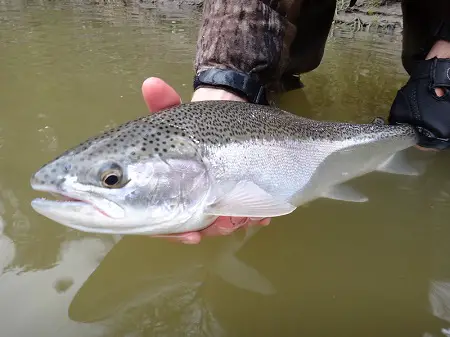
Steelhead and rainbow trout display distinct lifestyles that make them different: steelhead are anadromous or what some call migratory, traveling to the ocean before returning to rivers for breeding.
Rainbow trout on the other hand predominantly or entirely reside in freshwater throughout their lives.
Due to these varied habits, the two species exhibit noticeable differences in appearance, particularly in size and coloration.
While most rainbow trout are very colored with heavy spots, steelhead can often be chrome silver sided with little or no pink strips and fewer black spots.
Stocked Rainbow Trout VS Wild Rainbow Trout
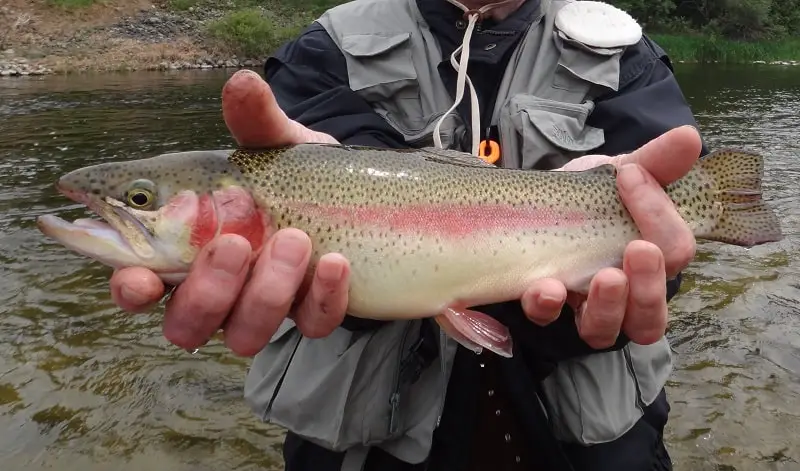
Both stocked rainbow trout and wild rainbow trout are the same, except they will exhibit differences in feeding behavior and survival behavior.
Wild rainbows will be more selective on food sources and will be more cautious. They will also be better hunters and have more selective feeding windows.
Stocked rainbow trout tend to be less cautious and will eat almost anything presented to them.
Some will argue that wild rainbow trout also taste better, while others will disagree.
Fishing For Rainbow Trout
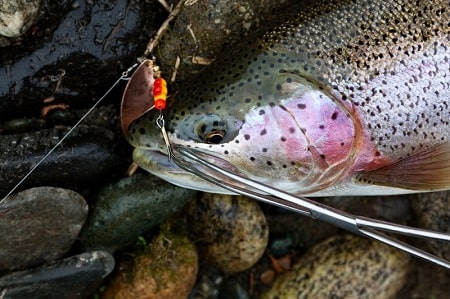
Fishing for rainbow trout takes some knowledge and some skill. I highly suggest you do what experienced guides and experts do to catch rainbow trout. I will provide my best tips and tactics and, if followed, will greatly improve your success with rainbow fishing.
In fact, far too many anglers catch fewer rainbows than they should because of simple and easily fixable mistakes.
Where To Find Rainbow Trout In Rivers
Rainbow trout like current which provides more oxygen and brings them food. They also prefer areas where they feel comfortable and confident feeding and holding.
These areas often include:
- Deeper Water: Deeper water sections of the river known as pools, trenches, or holes
- Fast Riffle Current: Faster riffles bring food to the rainbows and also hide their location from predators. Rainbows only hold in this type of water when the conditions are ideal and when there is a significant amount of food coming down the river.
- Pockets: pocket water in faster sections of the river where rocks and holes provide mini-holding spots that rainbows use to rest and feed.
- Structure: Struction like logs, rocks, and ledges provide a great location where rainbows can stay hidden and still hold and feed.
- Tailouts: The tail-out is the slower and often shallow section at the end of the pool or run before the river goes into riffles or rapids. This is often the slowest part of the pool and is preferred by rainbows feeding on surface insects.
- Head Of The Pool: I learned this as a guide observing large trout feeding in pools over many years. The largest trout in the pool, I often call them the king and queen, will move to the head of the pool to feed when there are major bug hatches. This is often the prime spot. They will chase any smaller trout out so they can be in a position to get the most food as it enters the pool from above. I have seen 26-inch trout chase out 25-inch trout out of this spot. This is a hierarchy scenario that anglers can capitalize on in some rivers.
Where To Find Rainbow Trout In Lakes, Ponds, and Reservoirs
When it comes to still water fishing lakes, ponds, and reservoirs, trout can roam long ways. At any given time, trout can be out in open water, or they can follow the shoreline in search of food, and they can be deep or shallow.
However, common productive spots include:
- Stream mouths
- Mid-Lake structures like rock piles and humps
- Points that protrude out into open water
- Shoreline structures such as logs, fallen trees, rocks, and weeds.
Trout in lakes and ponds will also go where the most food is, where the preferred water temperature is, and also where the oxygen content is sufficient.
Check out:
- Trout Fishing In Lakes
- Trout Fishing in Reservoirs
- Trout Fishing In Ponds
Rainbow Trout Rod & Reel Setup
When it comes to gearing up for rainbow trout fishing and the line you use, it’s essential to be mindful of their sharp eyesight and acute awareness of their surroundings.
For smaller streams and lakes, opting for 3 to 6lb test monofilament is advisable to avoid spooking wary rainbow trout.
For slow moving presentations such as drifting a bait, go with a 3 or 4-pound leader made of fluorocarbon.
However, if you’re venturing into larger bodies of water where bigger rainbows thrive, it’s best to step up to a mainline of 8-pound test monofilament, but when fishing with lures, a 10 to 12-pound fluorocarbon leader is best.
Trout enthusiasts often invest in specialized rods and reels, but for beginners, a simple multi-species rod and reel will suffice. A light, medium-light, or medium 7-foot rod is a good all-purpose spinning rod.
This versatile setup allows you to target both small and large rainbow trout, as well as other trout species like rainbow trout.
Choose a reel between 2000 and 3000 size paired with a medium to medium-light rod for optimal performance.
Hooks For Rainbow Trout Fishing
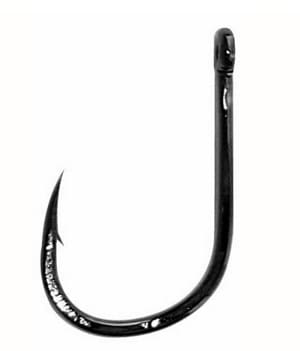
Hooks are a small yet crucial part of the bait rig that is often underestimated. Experienced anglers know that top guides pay meticulous attention to the hooks they use when targeting rainbow trout.
Certain hooks have a better ability to penetrate and securely hook rainbow trout, leading to improved catch rates.
For this purpose, I recommend short shank wide gape hooks such as the Raven Specimen hook or the Gamakastu Octopus hook.
For rainbow trout fishing, hook sizes ranging from 8 to 12 work best, and it’s essential to choose the hook size based on the size of your bait.
Equally important is learning how to properly hook your bait on the hook for maximum success. A well-hooked bait can significantly increase your chances of catching rainbow trout, potentially doubling or even tripling your catch.
For more in-depth guidance on fishing with baits and hooking them effectively, I have a dedicated series that can help you become a more successful rainbow trout angler.
Best Methods For Rainbow Trout Fishing
There are many methods used for catching rainbow trout. While some methods are very effective, other methods are not and should not be used.
Float Fishing / Bobber Fishing
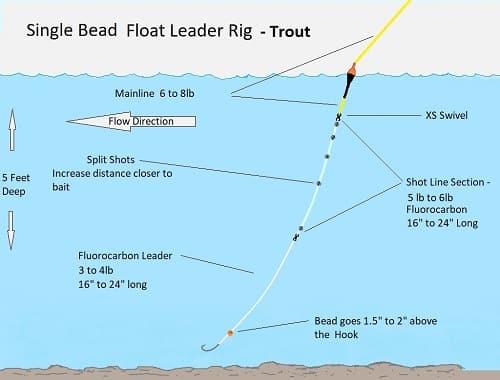
In rivers over 3 feet deep, float fishing is one of the most effective methods for catching rainbow trout. Float fishing in its simplest form is just drifting a bait down the river below a float.
However, guys that just toss out a float and watch it go will catch ten times fewer fish than skilled float fishermen. I guarantee this!!
There are four key fundamentals to good float fishing that I and other guides teach their clients and use themselves. I can’t stress enough how critically important doing this correctly is. I have seen hundreds of times where my clients will catch 20 trout while anglers around use catch 1 or 2, or none.
Check out my article, Float Fishing For Trout
Float fishing can also be done in ponds, and lakes.
Guide Tip: Use a float designed for river fishing and ones that are used by top anglers and guides. Anyone recommending the round red and white round bobbers for trout fishing is an idiot. You will NEVER see a top guide using a red and white bobber, and for good reason!
Drift Fishing For Rainbow Trout
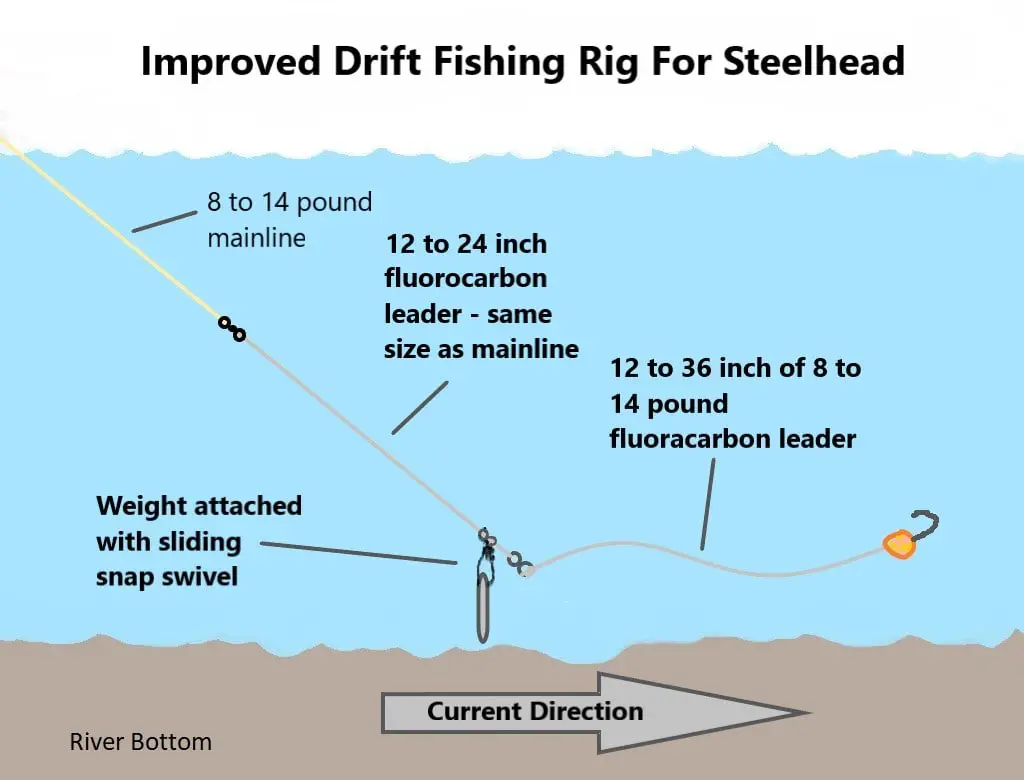
Drift fishing is simply drifting your bait and weight down the river at the speed of the current without the use of a bobber or suspension device.
Drift fishing is often used in larger, faster, and deeper rivers.
I use the rig shown in the diagram but adjust the line size for trout fishing. A 4 to 6 pound leader is best.
See my article Drift Fishing.
Bottom Bouncing For Rainbow Trout
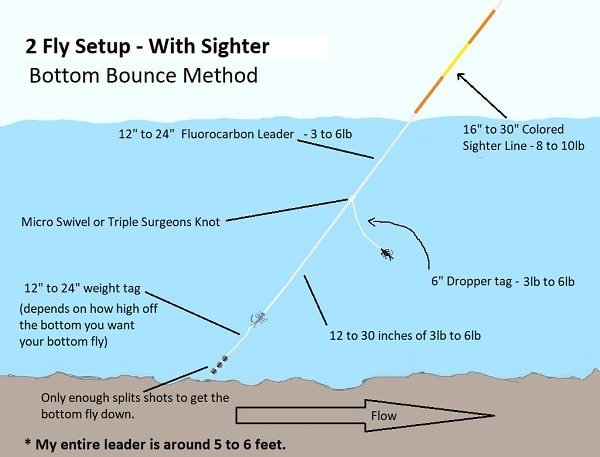
Bottom bouncing is similar to drift fishing. However, it is more suitable for shallower and smaller sections of the river.
It is often my most effective spinn fishing method in pocket water and smaller stream less than 3 feet deep.
Check out my article, Bottom Bouncing.
Fly Fishing
Fly fishing is my personal favorite method of fishing for rainbow trout. I find it challenging in some water and very easy in other water. In certain types of water, it is not uncommon for a good fly fisherman to catch more rainbow trout than a spin fisherman.
With fly fishing, you can fish large flies known as streamers, or imitate the aquatic insects below the surface known as nymphs with the nymph fishing method or Euro Nymphing method.
The ability to closely imitate a drifting insect on the waters surface to feeding trout is unique to fly fishing.
Some great flies for rainbow trout are woolly buggers, hairs ear nymphs, pheasant tail nymphs, egg flies, and worm flies.
For more best flies and methods, check out Fly Fishing For Trout article.
Bottom Fishing / Still Fishing
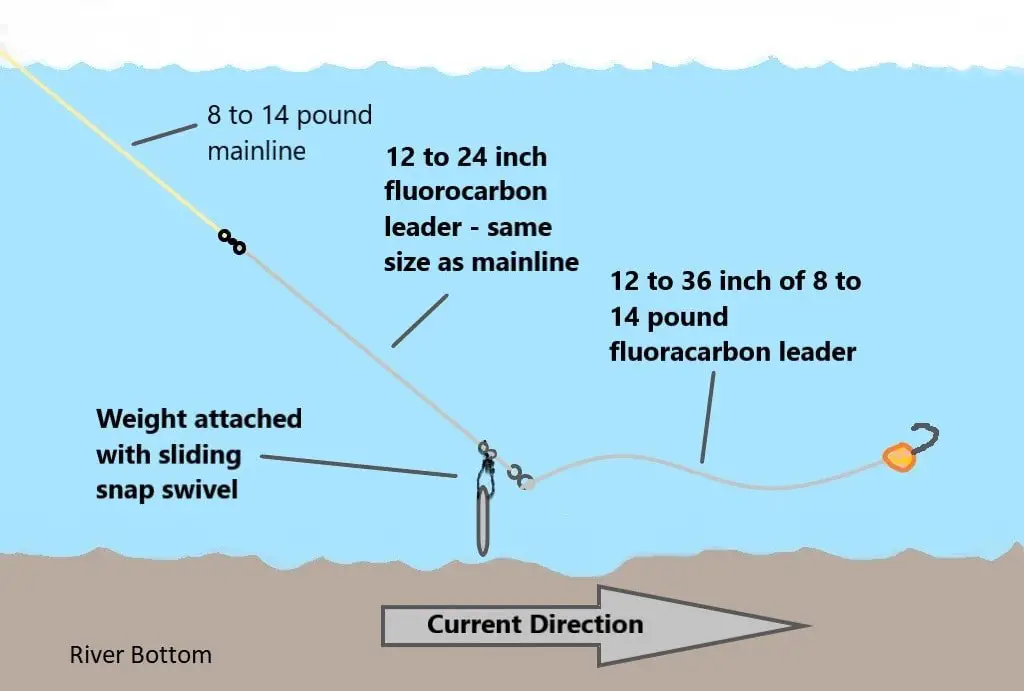
Some anglers like to cast out a bait on a weight rig and let it rest on the bottom.
There are ways to do this better, and at times this can be very effective in lakes, ponds, and sometimes rivers.
Since trout in rivers don’t move around much, this method is least effective in rivers, especially rivers with low populations of trout.
Best Baits For Rainbow Trout Fishing
All of the above methods use baits. There are a lot of baits that anglers will use, some good, some not so good.
As a guide, who has fished with and learned from any other guides, I’m very particular about the baits I put on the hooks. I have had over 35 years of experimenting with nearly every trout bait imaginable, from cut up pieces of hot dogs, to gum, kitchen sponges, to worms and eggs.
I’ll be brutally honest with you, most anglers have no freaking clue how or why trout grab a bait, and they use and recommend baits that are low percentage baits. Many of these baits would not be found in the vest and packs of top trout guides for good reasons.
As a guide, it is my responsibility to use my vast knowledge to only use proven and highly effective, and consistent baits on the hooks my clients are using. Anything else would be just lazy and dumb.
The best baits for rainbow trout are small to midsized earthworms, fish eggs, live bait like maggots, insects, minnows, crayfish, and leeches. Occasionally and for various reasons that I discuss on my page Best Baits For Trout, I will use artificial or imitations baits. These can also include baits like Berkley Powerbait.
I do not use or recommend low-percentage baits such as corn or marshmallows, and neither should you.
Presenting Live Bait for Rainbow Trout
When fishing in areas with current, your goal is to cast your bait upstream and allow it to drift downstream naturally.
As the split shot hits the bottom, it’s crucial to lift the rod tip to avoid getting snagged between rocks.
Once you detect the bottom, you want to lift the rod high enough to keep the bait 6 to 12 inches off the bottom. Baits above a rainbow trout’s head are proven to catch 80% more trout than a bait below their heads.
Keep the slack out of the line at all times but don’t pull the bait, instead, let the current smoothly carry the bait downstream as naturally as possible. Once the bait drifts past your fishing spot, reel it in and repeat the drift.
Achieving a perfect drift may require multiple casts to cover the spot completely, but it’s essential for a natural presentation that won’t raise suspicion from rainbow trout.
Using a bobber to drift with the current or the wind on a lake is a more straightforward approach, but the wrong-sized bobber, a twitching bobber, or a dragging bobber can potentially spook rainbow trout.
Bait Restrictions for Rainbow Trout Waters
Before you purchase your baits and head out for rainbow trout fishing, it’s crucial to familiarize yourself with the specific regulations in your state.
Different bodies of water may have their own unique rules and restrictions on baits. For instance, in western states, live bait might be prohibited in many bodies of water, while it’s often allowed in the Midwest and East Coast.
Moreover, certain bodies of water may enforce selective gear rules, which could restrict the use of barbed hooks, treble hooks, or multiple hooks.
Keep in mind that regulations can vary significantly from one area to another, even within a single stream or river.
It’s essential to pay attention to signs indicating terms like “Delayed Harvest,” “Artificial Lures Only,” and “Stocked Trout Waters,” as they may appear along the same stream or river with different regulations in different sections.
Lure Fishing
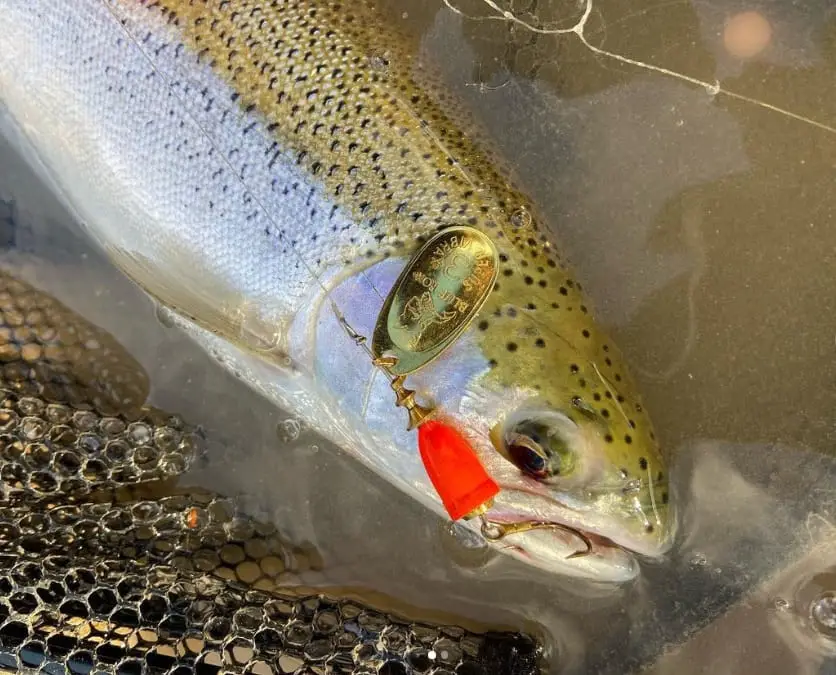
Spin fishing with lures is an excellent and very popular way of fishing for rainbow trout. Small lures like spinners, spoons, jigs, and crankbaits are effective in rivers and lakes.
Lakes, ponds, and reservoirs are where lure fishing excels. You have the ability to cast out far and cover a lot of water. You also have the ability to cover various depths.
Best Lures For Rainbow Trout Fishing
I use a variety of lures that are good for rainbow trout fishing. I will change my lure type, size, and color based on the conditions and the feeding behavior of the rainbow trout.
A lure that worked last week under certain conditions could be useless this week.
I have even seen rainbow trout go crazy for a specific color in the low light hours of early morning and then only want a completely different color in the sunny afternoon.
This is why I have a good selection of lures, colors, and sizes.
Some of my favorite rainbow trout lures are:
- Spinners: Learn how to use them more effectively and you will catch more trout.
- Spoons: Spoons fished properly are very effective for rainbow trout.
- Crankbaits: I love crankbaits for big rainbow trout. Some work better than others
- Jigs: This is a lesser known lure but jigs used properly will catch large and small rainbow trout.
Rainbow Trout Fishing Regulations
In many parts of the country, there are fishing regulations pertaining to rainbow trout fishing. There are too many different stipulations and rules, and they can change yearly, so it would be irresponsible of me to list them.
It is your responsibility to check your local fishing regulations to be sure you fish legally. Even some lakes or stretches of rivers will have exclusive rules. So check the river and lakes you want to fish in your local fishing regulations before you go fishing.
Rainbow Trout Fishing Q&A
I’ll likely update this every 6 to 12 months to add more information, so check back often. I also encourage you to ask questions or provide your tips, tricks, and advice regarding rainbow trout fishing in the comments section below.
Tight Lines
Graham

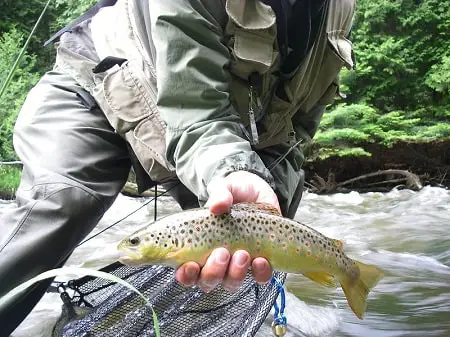
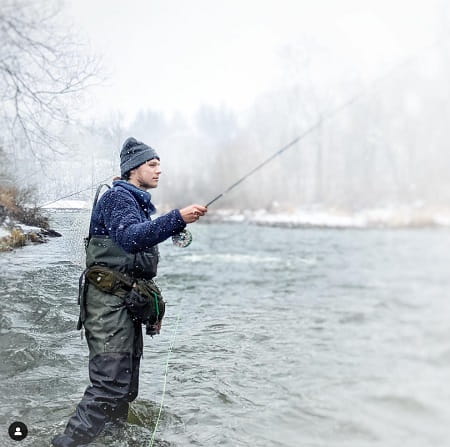
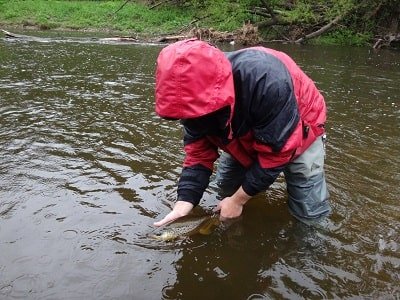
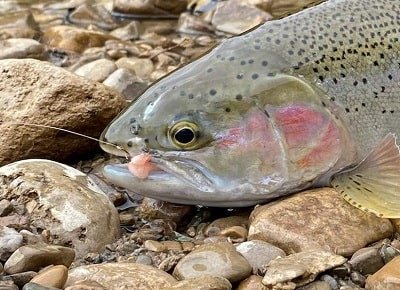

Thank you for all the good and very helpful information.
My wife and I have been rainbow trout fishing the same northern lake in mich for 30+
years I have had a 7lb and a 9 lb rainbow mounted.The best trip was 50 ranbows in a week.We released 40.We use a lindy rig and as u said color makes a difference.We traveled to this lake i late june and again this month for 10 day stays.We fished 2-3 times a day each trip and DID NOT SEE ANY TROUT.Only thing that we caught were bluegills and bass.Do you have ANY idea what may have happened to the trout??
Tom& Sandy stallard.lucky1auto @yahoo.com
Hey Tom,
The only thing I can think is they might be really deep and out of your reach. Its hard to say unless I know the lake.. You could check with the local DNR to see if there was some sort of fish kill.
Graham